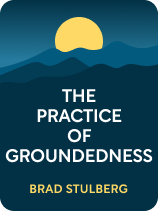

This article is an excerpt from the Shortform book guide to "The Practice of Groundedness" by Brad Stulberg. Shortform has the world's best summaries and analyses of books you should be reading.
Like this article? Sign up for a free trial here.
Are you learning to accept yourself? Are there concrete steps you can take towards self-acceptance?
Once you accept yourself fully, you’ll feel more confident and connect with others better. Accepting yourself requires two steps: investigating your fears and being honest about your feelings.
Keep reading to learn more about these steps towards self-acceptance.
Accepting Your Whole Self
Learning to accept yourself means embracing yourself as you are with all your weaknesses as well as your strengths.
Many people try to hide behind a mask of perfection. You might want others to see you as the perfect CEO, student, or parent when such a status is unattainable. When you don’t match the image you present yourself as, however, you’ll be insecure and feel like an imposter.
On the other hand, being open to vulnerability helps you be more comfortable with who you are. This means accepting your flaws and weaknesses and not being afraid to reveal them to others. You might fear that admitting your flaws will make you look weak in front of others, but it has the opposite effect: Studies show that people actually find expressions of vulnerability courageous. It also helps others better connect with you by making them feel more comfortable and trusting toward you.
(Shortform note: Embracing your flaws and weaknesses can be easier said than done. In The Gifts of Imperfection, Brené Brown explains that everyone experiences shame, or the feeling that you’re not good enough. She writes that to be vulnerable and accept your whole self, you must first cultivate your sense of worthiness—the conviction that you deserve to be loved just as you are. You can do this by accepting yourself unconditionally, rejecting the belief you must meet others’ expectations or standards, recognizing that you don’t need to prove or earn your worth, and believing you deserve love and belonging.)
To be more accepting of your whole self, you can:
1. Investigate your fears. When you feel insecure, reflect on what you’re really afraid of. Are you afraid of embarrassing yourself or being rejected by others? Acknowledge that everyone experiences those same fears and imagine what might happen if you accept them instead of trying to repress them. By doing so, you may realize that your fears are natural and that they can help guide you into acting productively.
(Shortform note: In Tools of Titans, Tim Ferriss provides an alternative exercise for investigating and overcoming your fears: First, imagine the worst-case scenario in vivid detail. Ask yourself how likely it is to happen and how you could recover from this scenario. Next, imagine the best-case outcome and ask yourself how this outcome would improve your life. According to Ferriss, this exercise can help you realize that the worst outcome is not as crippling as you might have believed.)
2. Be honest about your thoughts and feelings. Sometimes, to protect our image and our egos, we say things we don’t mean—we, for example, might project an image of confidence when we feel insecure. Pay attention to these moments. For example, if your team at work runs into a problem, instead of telling them that everything’s fine, you might share that you’re feeling uncertain but are determined to find solutions.
(Shortform note: In A New Earth, Eckhart Tolle explains that all humans have an ego—a part of our minds that fears never being enough. Because of this fear, our ego looks for ways to gain superiority by driving our thoughts and behaviors to construct a false, inflated self-image. According to Tolle, our ego-controlled behaviors are highly problematic, contributing to social, environmental, and economic crises, which underscores the importance of the advice to not let your ego dictate your behaviors and to be honest about your thoughts and feelings.)

———End of Preview———
Like what you just read? Read the rest of the world's best book summary and analysis of Brad Stulberg's "The Practice of Groundedness" at Shortform.
Here's what you'll find in our full The Practice of Groundedness summary:
- How "hustle" culture leads to burnout, illness, and unhappiness
- The six principles of groundedness to keep you balanced and stable
- Why you should create deep, quality relationships rather than many shallow ones






